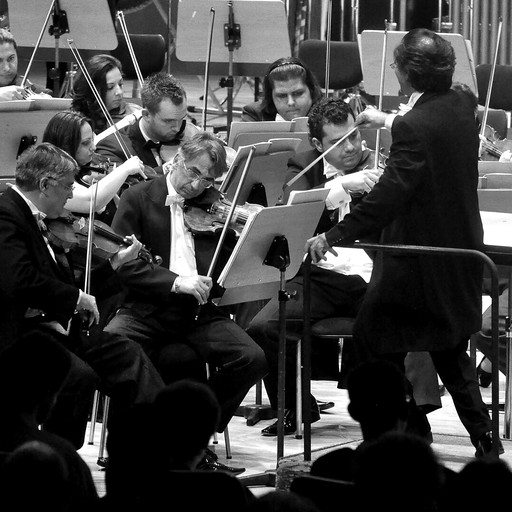For centuries, Roma and Sinti have been part of Europe’s musical fabric as performers, composers and developers of artistic styles and standards, not to mention a general source of inspiration. Since its first concert in 2002, the Roma and Sinti Philharmonic has sought to bring to light these manifold influences.
Culled from the top
Hailing from numerous Romani and Sinti subgroups, members of the Frankfurt-based Roma and Sinti Philharmonic come together from a number of prominent orchestras across Europe. The orchestra has featured performers from fifteen countries, in groupings ranging from chamber ensembles to a full symphonic line-up of up to seventy instrumentalists.
Director Riccardo M. Sahiti has dedicated himself to highlighting not only the superb professional level of these musicians and invited soloists but also the importance of Romani creativity in helping shape European art music through the centuries.
Since 2001 Mr. Sahiti has promoted the development of the Roma and Sinti Philharmonic both artistically and conceptually. The orchestra has commissioned several contemporary pieces, demonstrating that Roma and Sinti continue to take part in the development of compositional trends.
Artistic-political message
The Roma and Sinti Philharmonic was officially launched at its first concert on 3 November 2002, in the concert hall of Frankfurt’s Philantropin (Jewish elementary and grammar school). The Roby Lakatos Ensemble performed as guests. Speakers included Professor Micha Brumlik, the then director of the Institute for the Study and Documentation of the History of the Holocaust, and the politician Albrecht Magen. The Romani intelligentsia were represented by Romani Rose, head of the Central Council of German Sinti and Roma, and by the actor Nedjo Osman, among others.
The Philharmonic’s many subsequent performances have had a pedagogical dimension – some have involved conversations with students, aimed at increasing young people’s critical thinking skills.
The Roma and Sinti Philharmonic understands music as a political message, showing how a diversity of cultural backgrounds enriches society as a whole. Its performers serve not only as representatives of Romani cultures but also as ambassadors of European art.




